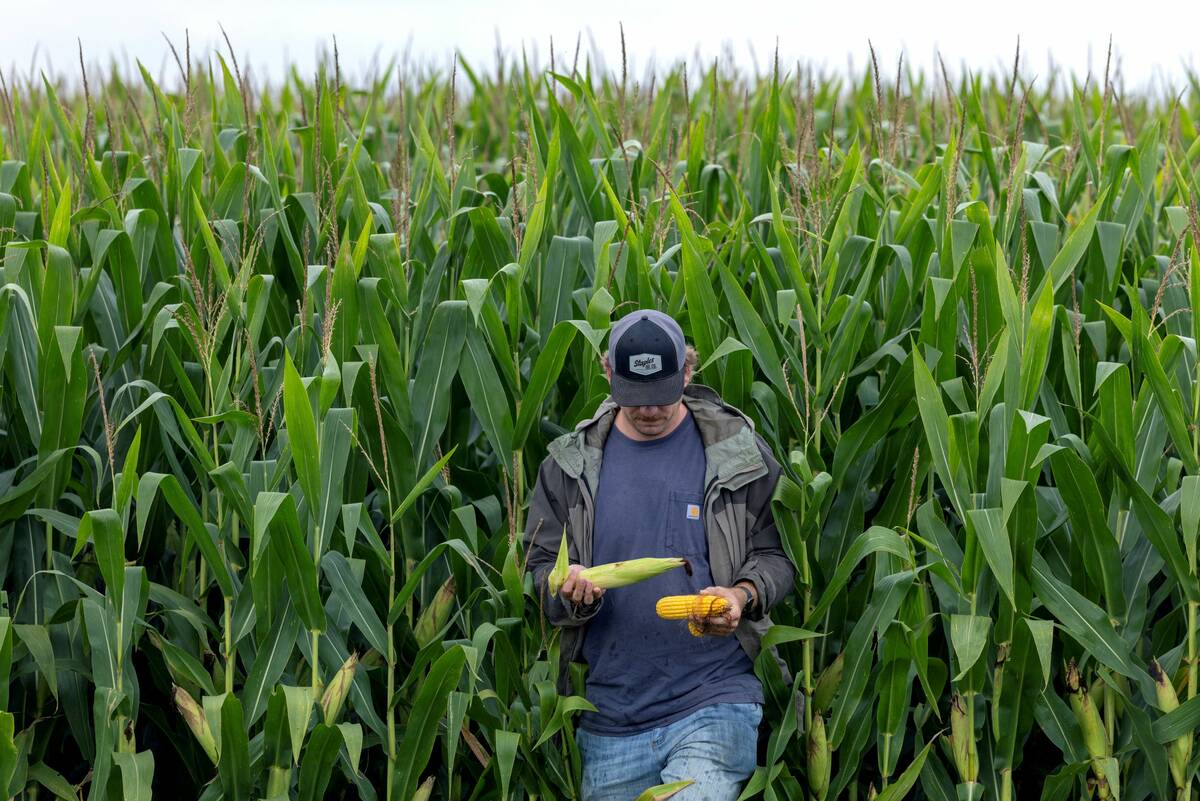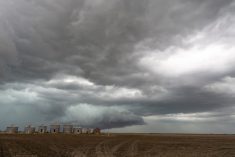A deep freeze early this week likely harmed some of the hard red winter wheat crop in the southern U.S. Plains, adding to the woes of a lingering drought, crop experts and agricultural meteorologists said on Tuesday.
“It (the freeze) was well within the parameters of damage in southwest Kansas, the west Oklahoma Panhandle, far northwest Texas and southeast Colorado,” said Don Keeney, meteorologist at MDA Weather Services.
Early morning temperatures for the past three days fell into the single digits (Fahrenheit) and teens in those areas, Keeney said, and remained that low for six or seven hours. A good portion of the wheat was jointing — a stage of development after the crop breaks dormancy and begins growing after the long winter — making it vulnerable to damage.
Read Also

The U.S. corn crop could be the biggest ever. That’s terrible news for America’s farmers.
The USDA predicts a record corn crop for U.S. farmers, who question the agency’s accuracy amidst high debt and low crop prices.
“For damage to occur to jointing wheat, temperatures would need to fall below 24 F (-4 C) for three or four hours, and we certainly saw that,” he said.
Data from Texas A&M University indicates moderate to severe impact on wheat yields on jointing wheat if the temperature falls below -4 C for two hours.
The low early Tuesday in Gage, Oklahoma, in the heart of wheat country, was 15 F (about -9.4 C) and the low Wednesday morning will be warming up to 0 C, Keeney said. “This is it for the real cold weather, it should be 10 to 15 degrees warmer tomorrow,” he said.
Beyond Okla. Panhandle
Mark Hodges, executive director of Plains Grains at Stillwater, Oklahoma, said the damage to Oklahoma’s crop probably extended well beyond the Panhandle region.
The Oklahoma wheat crop already had been stressed by drought, leaving it more vulnerable than normal to harm from a cold snap, he said.
“We didn’t have the tiller production or the root development we usually have. There already was a shortage of tillers,” Hodges said. “It is a very real concern and will be several days before we know the extent of damage.”
Keeney said the low temperature early Tuesday fell to 10 F (-12 C) in southeast Colorado, a geographic area that likely would be comparable to Oklahoma for the growth stage of the wheat plants.
The Oklahoma state crop report released late Monday showed 41 per cent of the winter wheat crop was jointing. Wheat is more advanced in Texas.
Travis Miller, an agronomist at Texas A+M University, told Reuters late Monday that the state “did not dodge a bullet. It is a mess out there, both from freeze and drought.”
Minimal damage for Kan.
“I don’t foresee widespread damage in Kansas but that’s not to say there won’t be some local damage,” said Jim Shroyer, an agronomist at Kansas State University, referring to Kansas wheat, which lags the maturity of Oklahoma’s.
“The wheat is further along in Texas and they could have serious issues, so I do not question Travis at all,” he added.
Commodity Weather Group (CWG) said on Tuesday only “spotty” damage is expected to jointing wheat in the southern Plains and emerging corn in eastern Texas from the lows in the 20s F on Tuesday morning.
“Recent rains have benefited about two-thirds of the Plains wheat and the southwestern third will remain at risk for building dryness next month as jointing and early heading occur,” said CWG meteorologist Joel Widenor.
Much of the winter wheat crop in the U.S. Plains has been struggling due to an extended drought, making the young plants vulnerable to wild weather fluctuations. Recent snow and rain have improved conditions in some areas.
The Texas Agricultural Statistics Service said on Monday afternoon that the Texas winter wheat crop was rated 47 per cent poor to very poor due to the drought, 34 per cent fair and 19 per cent good to excellent.
Kansas wheat was rated 31 per cent poor to very poor, with 40 per cent fair and 29 per cent good to excellent. The Oklahoma crop was rated 33 per cent poor to very poor, 41 per cent fair and 26 per cent good to excellent, according to state agricultural officials.
— Sam Nelson covers the CBOT grain and oilseed markets for Reuters in Chicago. Additional reporting for Reuters by Carey Gillam in Kansas City.















